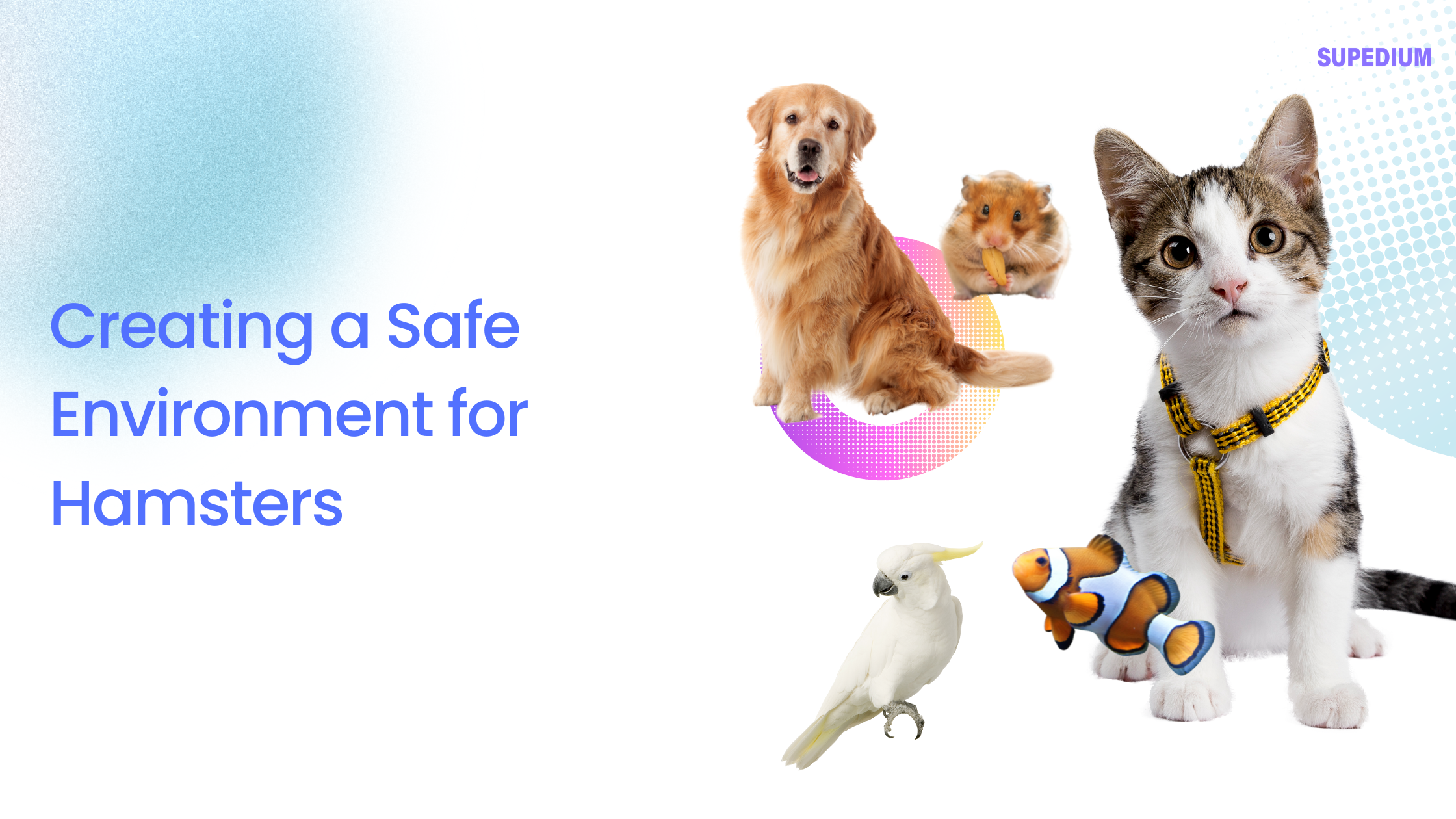Table of Contents
![]()
Hamsters are delightful pets known for their energetic personalities and small size, but ensuring their well-being involves more than just providing food and water. Creating a safe environment is essential for their health, happiness, and overall quality of life. This guide outlines the key aspects of setting up a secure and enriching habitat for hamsters.
Choosing the Right Habitat
The first step in creating a safe environment for your hamster is selecting the appropriate cage. Various types of cages are available, each with its own advantages and disadvantages:
- Wire Cages: These cages provide excellent ventilation and are generally easy to clean. However, they can pose escape risks if the bar spacing is too wide. Ensure the spacing is appropriate for the size of your hamster to prevent escapes.
- Glass Tanks: Glass tanks offer a clear view of your hamster and create a controlled environment. They are less likely to allow escapes but can have ventilation issues and be quite heavy. Proper ventilation is crucial to prevent respiratory problems.
- Plastic Cages: Plastic cages are lightweight and typically have secure designs that prevent escapes. However, they can have poor ventilation and may be prone to chewing by some hamsters. Always monitor the condition of the cage and replace it if necessary.
The size of the cage is also important. While there is no one-size-fits-all answer, a larger cage with multiple levels is preferable. Ensure the cage has enough space for your hamster to move around comfortably and explore.
Ensuring Proper Ventilation
Ventilation is a critical aspect of hamster care. Proper airflow helps prevent respiratory issues and keeps humidity and odors in check. When choosing a cage, consider one with good ventilation, such as those with mesh panels. Avoid cages with completely closed sides, as they can lead to poor air quality and discomfort for your hamster.
Providing Safe and Comfortable Bedding
Bedding plays a significant role in your hamster’s comfort and health. There are several bedding options, each with its benefits and risks:
- Paper-Based Bedding: This type is highly absorbent and produces minimal dust, making it a good choice for hamsters with respiratory sensitivities. Opt for biodegradable options whenever possible.
- Aspen Shavings: Aspen is a safe, natural bedding material that doesn’t pose the same risks as cedar or pine shavings, which can emit harmful fumes. However, aspen shavings can still produce some dust, so ensure proper ventilation.
- Materials to Avoid: Cedar and pine shavings are not recommended due to their potential to cause respiratory problems. Fabric or cotton fluff can also be hazardous if ingested or used improperly.
Maintain a depth of bedding that allows your hamster to burrow and dig, which is a natural behavior. Regularly clean and replace the bedding to prevent odor build-up and maintain hygiene.
Selecting Appropriate Toys and Enrichment
A stimulating environment is crucial for your hamster’s mental and physical health. Provide a variety of toys and enrichment items:
- Exercise Wheels: Choose a wheel that is appropriately sized for your hamster. It should be solid rather than barred to prevent limb injuries.
- Chew Toys: Hamsters have a natural instinct to chew, so provide safe, chewable toys made from materials like untreated wood or cardboard.
- Hideouts and Tunnels: These items offer hiding spots and play areas, which help reduce stress and encourage exploration.
Incorporate foraging opportunities and interactive toys to keep your hamster mentally engaged. Regularly rotate toys to maintain interest and provide a diverse range of activities.
Maintaining a Safe Temperature and Humidity
Hamsters are sensitive to temperature and humidity changes, so it’s important to keep their habitat within optimal conditions:
- Temperature: Maintain a temperature range suitable for your hamster’s species. Generally, a temperature between 65°F and 75°F (18°C to 24°C) is ideal. Avoid placing the cage in direct sunlight or near heating vents.
- Humidity: Aim for a humidity level between 30% and 70%. High humidity can lead to respiratory issues and mold growth. Use a dehumidifier or improve room ventilation if necessary.
Preventing Escape and Injury
Ensuring your hamster’s safety involves more than just providing a comfortable habitat; you must also prevent potential escapes and injuries:
- Cage Security: Regularly inspect the cage for gaps, loose parts, or any weaknesses that could allow your hamster to escape. Ensure all doors and locks are secure.
- Preventing Injury: Check for sharp edges or hazards within the cage. Choose accessories and toys that are safe and free from small parts that could pose choking hazards.
Regular Health Monitoring
Regular monitoring of your hamster’s health is essential for early detection of any issues:
- Behavior and Physical Condition: Watch for any changes in behavior or signs of illness, such as lethargy, changes in eating habits, or unusual symptoms. Regular veterinary check-ups are advisable.
- Hygiene: Maintain a clean environment by following a regular cleaning schedule for the cage and accessories. Sanitize food and water dishes to prevent bacterial growth.
Addressing Common Hazards
Be aware of potential hazards that could affect your hamster’s health:
- Toxic Substances: Avoid exposing your hamster to harmful substances, such as toxic plants, unsafe foods, or household chemicals. Research and choose safe alternatives.
- Pests and Parasites: Regularly check for signs of pests or parasites. Use safe methods to control and prevent infestations, and consult a vet if you notice any issues.
Conclusion
Creating a safe environment for hamsters involves careful consideration of their habitat, bedding, toys, temperature, and overall health. By following these guidelines and regularly monitoring their well-being, you can ensure your hamster lives a happy, healthy life in a secure and stimulating environment.
Share This





Be the first to comment